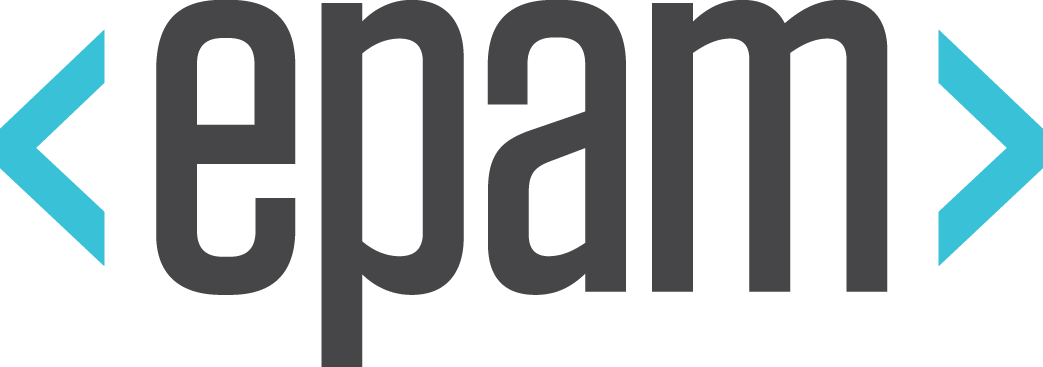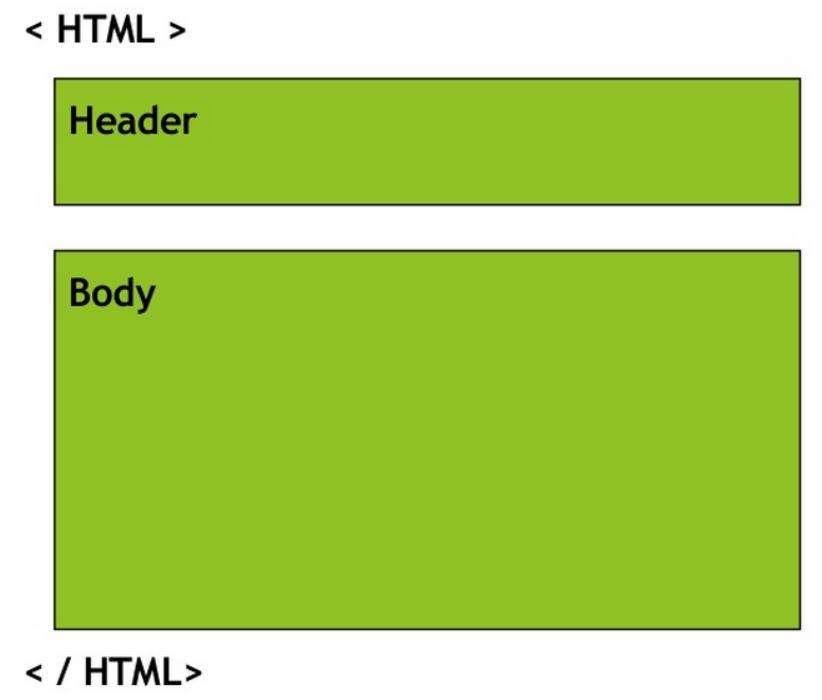NOVICE

Client-server

HTTP
HyperText Transfer Protocol
Is an application protocol for distributed, collaborative, hypermedia information systems. HTTP is the foundation of data communication for the World Wide Web.

What is HTTP?
HTTP is a "language" spoken between clients and servers
Internet Data
An HTTP client makes HTTP requests
An HTTP server accepts HTTP requests, and sends the client an HTTP response
HTTP Methods
- GET - I want a resource
- POST - I want to send you data
- PUT - I want to change a resource
- DELETE - I want to delete a resource
- HEAD - I just want the response headers
- OPTIONS - What methods can I use?
A client uses one of the methods to send HTTP Requests to the server
HTTP
HTTP status code
- 1xx Informational
- 2xx Success
- 200 OK
- 3xx Redirection
- 4xx Client Error
- 400 Bad Request
- 401 Unauthorized
- 403 Forbidden
- 404 Not Found
- 5xx Server Error
- 500 Internal Server Error
- 504 Gateway Timeout
HTTP Request URI
Uniform Resource Identifier
URI is how a server identifies a resource to be delivered to the client
Examples
/index.html
/map/21.3088569,-157.8084575
URL
Uniform Resource Locator
A URL is a URI that also specifies how to get that resource (what protocol to use)
Examples
https://www.google.com
http://www.devleague.com/apply
https://www.google.com
http://www.devleague.com:80/apply
http://162.243.46.54:80/parting-thoughts-from-a-student/
Protocol
Host address
port
path
HTTP Request
the default port to make HTTP requests is 80
The HTTP Request Response cycle starts with the HTTP Request
An HTTP Request is a client connecting to a host (server that is listening for incoming messages) and sending a Request Message
HTTP Response
An HTTP Response is the server replying to the client's original HTTP Request with a message and the requested resource
HTML
HyperText Markup Language
In the late 1980s, Tim Berners-Lee was working as a physicist at CERN (the European Organization for Nuclear Research). He devised a way for scientists to share documents over the internet.
What is HTML?
- Markup language
- Defines content for the browser to display
- Separates "content" and "presentation"
- Pre-defined set of elements (tags)

W3C
World Wide Web Consortium
The main international standards organization for the World Wide Web (abbreviated WWW or W3)
Specification Maturation
- Working Draft (WD)
- Candidate Recommendation (CR)
- Proposed Recommendation (PR)
- W3C Recommendation (REC)
HTML
Versions
- HTML 0.9
- RFC 1866 — HTML 2.0
- HTML 3.2 — 14 jan. 1997 year;
- HTML 4.0 — 18 dec. 1997 year;
- HTML 4.01 — 24 dec. 1999 year;
- HTML5 — 28 oct. 2014 year
- HTML 5.1 — from 17 dec. 2012 year.

Doctype HTML 4
This DTD contains all HTML elements and attributes, but does NOT INCLUDE presentational or deprecated elements (like font). Framesets are not allowed.
HTML 4.01 Strict
<!DOCTYPE HTML PUBLIC "-//W3C//DTD HTML 4.01//EN" "http://www.w3.org/TR/html4/strict.dtd">HTML 4.01 Transitional
This DTD contains all HTML elements and attributes, INCLUDING presentational and deprecated elements (like font). Framesets are not allowed.
<!DOCTYPE HTML PUBLIC "-//W3C//DTD HTML 4.01 Transitional//EN" "http://www.w3.org/TR/html4/loose.dtd">HTML 4.01 Frameset
<!DOCTYPE HTML PUBLIC "-//W3C//DTD HTML 4.01 Frameset//EN" "http://www.w3.org/TR/html4/frameset.dtd">This DTD is equal to HTML 4.01 Transitional, but allows the use of frameset content.
Doctype XHTML 1.0
Strict
<!DOCTYPE html PUBLIC "-//W3C//DTD XHTML 1.0 Strict//EN" "http://www.w3.org/TR/xhtml1/DTD/xhtml1-strict.dtd">This DTD contains all HTML elements and attributes, but does NOT INCLUDE presentational or deprecated elements (like font). Framesets are not allowed. The markup must also be written as well-formed XML.
Transitional
<!DOCTYPE html PUBLIC "-//W3C//DTD XHTML 1.0 Transitional//EN" "http://www.w3.org/TR/xhtml1/DTD/xhtml1-transitional.dtd">This DTD contains all HTML elements and attributes, INCLUDING presentational and deprecated elements (like font). Framesets are not allowed. The markup must also be written as well-formed XML.
Frameset
<!DOCTYPE html PUBLIC "-//W3C//DTD XHTML 1.0 Frameset//EN" "http://www.w3.org/TR/xhtml1/DTD/xhtml1-frameset.dtd">This DTD is equal to XHTML 1.0 Transitional, but allows the use of frameset content.
Doctype
This DTD is equal to XHTML 1.0 Strict, but allows you to add modules (for example to provide ruby support for East-Asian languages).
HTML 5
XHTML 1.1
<!DOCTYPE html PUBLIC "-//W3C//DTD XHTML 1.1//EN" "http://www.w3.org/TR/xhtml11/DTD/xhtml11.dtd"><!DOCTYPE html>Simple HTML Page
<!DOCTYPE html>
<html>
<head>
<title>My first page</title>
</head>
<body>
<p>Hello <b>world!</b></p>
</body>
</html>
HTML structure
- Text containing markup tags
- Markup tags tell the browser how to display the page

Basic HTML
- All HTML documents must start with the type declaration of HTML: <!doctype HTML>
- The HTML document itself begins with <html> and ends with </html>
- The visible part of the HTML document is between <body> & </body>
- The information about the page like title of the page, scripts, styles and meta data is between <head> & </head>
<!doctype html>
<html>
<head>
<title>My First Webpage</title>
</head>
<body>
<h1>Heading</h1>
<p>This is a paragraph</p>
</body>
</html>html head
According to the HTML standard, only a few tags are legal inside the head section
<head>
Defines information about the document
<title>
<link>
<meta>
<!DOCTYPE>
Defines the document type. This tag goes before the <html> start tag.
Defines a resource reference
Defines meta information
Defines the document title
tAGS
HTML attaches special meaning to anything that starts with the less-than sign ("<") and ends with the greater-than sign (">"). Such markup is called a tag.
- Make sure to close the tag, as some tags are closed by default, whereas others might produce unexpected errors if you forget the end tag.
- Proper nesting is one rule that must be obeyed in order to write valid code.
Tags gotchas
Correct
Wrong
<p>This <b>is</p> incorrect</b><p>This <b>is</b> correct</p>Attributes
The start tag may contain additional information. Such information is called an attribute
ATTRIBUTES USUALLY CONSIST OF 2 PARTS:
- An attribute name
- An attribute value
<input required="required">
<p class="example">Tag with attributes</p>
<span id="identificator">Tag with id</span>
<div title="This is a DIV.">A sentence.</div>- Attributes are placed inside an element's first tag
- They are placed after the tag name
- You're assigning (=) a value to an attribute
Comment
HTML has a mechanism for embedding comments that are not displayed when the page is rendered in a browser .
This is useful for explaining a section of markup, or leaving notes for other people who might work on the page, or for leaving reminders for yourself.
HTML comments are enclosed in symbols as follows:
<!doctype html>
<html>
<head>
<title>My First Webpage</title>
</head>
<body>
<!-- The page content -->
<h1>Heading</h1>
<p>This is a paragraph</p>
</body>
</html>ELEMENTS
- HTML consists of a set of elements
- Elements define the semantic meaning of their content
- Include everything between two matching element tags , including the tags themselves
Some elements have very precise meaning, as in "this is an image", or "this is a heading". Others are less specific, such as "this is a section on the page" or "this is part of the text."
<html>
<body>
<p>You are in your beginning stage of</p>
<p>HTML</p>
</body>
</html>This structure is often thought of as a tree with branches (in this case, the <body> and <p> elements) growing from the trunk (<html>). This hierarchical structure is called the DOM : the Document Object Model
NESTING
- Nesting is the act of placing an HTML element inside another HTML element. You can nest tags infinitely -- as your project requires it.
- In this example, <p> tags were inside our <body> tag. Our <body> tag was also inside our <html> tag. Accordingly, this will be how the resulting web page is structured.
<html>
<body>
<p>You are in your beginning stage of</p>
<p>HTML</p>
</body>
</html>HTML is forgiving
- Unknown element tags are ignored
- Unknown attributes are ignored
- Unknown values are ignored
- Browser tries to close tags itself if they are not closed
Sandbox
CSS
Cascading Style Sheets

Is a style sheet language used for describing the look and formatting of a document written in a markup language.
CSS is designed primarily to enable the separation of document content from document presentation, including elements such as the layout, colors, and fonts
Simple CSS
body {
background: red;
color: blue;
font-size: 12px;
}Unfortunately, the CSS language is considerably different from the HTML language.
However, like HTML, it is very easy to understand and write.
Syntax
CSS has a very straightforward syntax.
Your CSS is divided into rules. Each rule has two parts: a selector and one or more declarations (each of which has a property and a value).

Selector
The selector does exactly what it sounds like: it selects certain parts of your HTML document. There're a few ways for you to do this. The simplest is to simply u se a tag name
This'll select all the <h1> tags in your document:
h1 {
*put your declarations here*
}Declaration
- Once you've selected a set of elements, use declarations to change their visual properties.
- Declarations come after a selector, and are enclosed in curly-brackets {like these}
- Don't forget that semi-colon! It'll lead to big problems later on!
Format
Each declaration has the format:
property: value;Ruleset
- Each (valid) declaration block is preceded by a selector which is a condition selecting some elements of the page.
- The pair selector-declarations block is called a ruleset, or often simply a rule.

Font
Another common task is changing the appearance of your text. Once again, CSS has plenty of ways to do this
To change text size, use "font-size":
To change font, use the "font-family" property:
To change alignment, use "text-align":
h1 {
font-family: "Times New Roman";
}h1 {
font-size: 22pt;
}h1 {
text-align: center;
}Color
ANOTHER COMMON TASK IS CHANGING THE Color OF a TEXT or background
To change text color, use "color":
h1 {
color: blue;
}To change background color, use "background-color":
body {
background-color: grey;
}COMBINING PROPERTIES
You can add any number of properties to a declaration
body {
background-color: green;
text-align: center;
font-family: "Arial";
}
p {
color: yellow;
font-size: 14px;
}Apply css to HTML
THere are 3 ways to apply CSS to HTML page:
- Inline
- Internal
- External
Inline style
- Added directly to element in thestyle attribute
- Only stylesthe element on current page
- Not reusable
- Avoid whenever it is possible
<!DOCTYPE html>
<html>
<head>
<title>Inline</title>
</head>
<body>
<p style="color: red;">Supporting paragraph. Very informative.</p>
</body>
</html>Internal stylesheets
- Added to <head> between <style> tags
- Only styles elements on current page
- Avoid whenever it is possible
<!DOCTYPE html>
<html>
<head>
<title>Internal</title>
<style>
h1 {
font-size:50px;
text-align: center;
}
</style>
</head>
<body>
<h1>This is my huge headline</h1>
<p>Supporting paragraph. Very informative.</p>
</body>
</html>External stylesheets
- Completely separate file, linked in <head>
- The file has extension ".css"
- Reusable styles contained in 1 document
- Best practice - use this one!
<!DOCTYPE html>
<html>
<head>
<title>External</title>
<link rel="stylesheet" href="mystyles.css">
</head>
<body>
<p>This is my snazzy red paragraph!</p>
</body>
</html>HTML FIle
mystyles.css
body {
width: 1000px;
margin: auto;
}
p {
color: red;
text-align: center;
}Page example
CSS
HTML
body {
background-color: green;
text-align: center;
font-family: "Arial";
}
p {
color: yellow;
font-size: 14px;
}<!DOCTYPE html>
<html>
<head>
<title>My first page</title>
<link rel="stylesheet" href="styles.css">
</head>
<body>
<p>Hello world!</p>
</body>
</html>Sandbox
JS
Javascript

Is a high level, dynamic, untyped, and interpreted programming language. It has been standardized in the ECMAScript language specification. Alongside HTML and CSS, it is one of the three essential technologies of World Wide Web
What is JavaScript
- JavaScript is a Scripting Language
- A scripting language is a lightweight programming language.
- JavaScript is programming code that can be inserted into HTML pages.
- JavaScript inserted into HTML pages, can be executed by all modern web browsers.
History
1995 - 1997
- Created by Brendan Eich for Netscape Navigator in only ten days!
- Mocha ⇒ LiveScript ⇒ JavaScript ⇒ ECMAScript
- Influenced by:
- C/Java ⇒ Syntax
- Scheme ⇒ Functional Programming
- Self ⇒ Prototype inheritance
- Adopted by Microsoft with the name JS for IE 3.0 ...
- First browser wars!
- Standarized by ECMA International.

History
1998 - 2002
- W3C: DOM Level 1 and DOM Level 2
- Microsoft created XMLHttpRequest
- Microsoft won the war with IE 6


History
2003 - 2008
- Mozilla Firefox was born
- AJAX acronym is coined
- Google becomes more than just a search engine: GMail, Maps
- First JavaScript libraries: Prototype, Scriptaculous, etc
- JQuery: now DOM is easy



History
2009 - NOW
- Google Chrome was born
- ECMAScript 5 was approved
- It began the era of mobile applications (SPA, mobile first)
- HTML5 & CSS3
- MV* frameworks move to the client: Angular, Backbone, etc.
- Server side JavaScript: Node.js
- JavaScript grows up


Why JavaScript?
- The name suggests that it should be similar to Java, but it is a different beast
- The language was created too quickly and has errors that many programmers do not care to avoid
- Still exists the idea that serious programming is done on the server and many programmers do not bother to learn JavaScript seriously
- It supports multiple paradigms: imperative or functional
- It is very flexible and expressive
- There have been significant improvements in performance
- The language is improving with the latest versions
- Whenever there are better books, tools, libraries, etc
JavaScript is a misunderstood language
But in JavaScript there are great ideas too
Why JavaScript?
- It is easy to learn
- It is easy to write, execute, test and debug
- It is the most widely used language
- On the client has beaten all its rivals:
- VBScript
- ActionScript (Flash)
- Applets (Java)
- On the server is becoming a major player (Node.js)
- Web applications can be built using only JavaScript:
- Front-end development
- Back-end development
- Server services (Web servers, message queuing services, authentication services, etc)
- JSON for client-server communication
- Even database structures (BSON) and query language (MongoDB, CouchDB)
- Isomorphic JavaScript: The Future of Web Apps?
WHAT CAN I DO WITH JAVASCRIPT?
- Respond to the users actions (click, hover over etc.)
- Change HTML&CSS properties of elements on the page
- Sophisticated animations
- Dynamically get new data from the server without reloading the entire page (AJAX)
Hello World!
Basics
- JavaScript is case sensitive
- Spaces do not matter
- Statements end with semi-columns (;)
- No strict data types
Comments
Commentaries are not for the computer but for the humans. It helps them to understand the code
Block (multiline)
code goes here /* comment goes here,
and here
*/ Single-line comments
code goes here //comment goes here /*
My first program:
Hello World!
*/
var a = "Hello World!"; //Declare new variable with initial value
alert(a); //Show message window with the content of the "a" variableExample
Variable Declaration
- Variables contain values and use the equal sign to specify their value
- Variables are created by declaration using the var command with or without an initial value state
- No need to specify a type
Declare variable without initial value:
var a;
var oneMore;
var anotherVar;
var awesomeVariable;Declare variable with initial value:
var b = 10;
var name = "Leonardo";
var price = 10.4;Set value to variable
- To set new value to a variable you are to use the equal sign "="
- New data overwrites the previous one
- No strict data type. It means that you can set any value with any type to a variable
//Declaration of a new variable with initial value below
var greeting = "Say hello to the new world of programming!"
var a;
a = 10; //You can set the value after the variable declaration
var name = "Raphael";
name = "Donatello"; //It will overwrites the content of the "name" variable
var age = 10;
age = "Teenager"; //No type checkingArithmetics
| Operator | Description | Example |
|---|---|---|
| + | Addition | var x = 10 + 2; |
| - | Subtraction | var x = 5 - 3; |
| * | Multiplication | var x = 2 * 2; |
| / | Division | var x = 20 / 5; |
| % | Modulus | var x = 10 % 4; |
| ++ | Increment | x++; |
| -- | Decrement | x--; |
var a = 10;
a++;
var b = a * 2;
b = b - 1;
b--;
var c = b / 2;
c = c - a;
var x = b & 8;//a == 10;
//a == 11;
//b == 22; a == 11;
//b == 21;
//b == 20;
//c == 10;
//c == -1;
//x = 4;EMBEDDING JAVASCRIPT IN HTML
inner script code
<!DOCTYPE html>
<html>
<head>
<title>My first page</title>
</head>
<body>
<h1>Example</h1>
<script language="javascript" type="text/javascript">
var a = "Hello World!";
alert(a);
</script>
</body>
</html>EMBEDDING JAVASCRIPT IN HTML
External script code
index.html
<!DOCTYPE html>
<html>
<head>
<title>My first page</title>
</head>
<body>
<h1>Example</h1>
<script language="javascript" type="text/javascript" src="script.js">
</script>
</body>
</html>var a = "Hello World!";
alert(a); script.js
EMBEDDING JAVASCRIPT IN HTML
Inline script code
<!DOCTYPE html>
<html>
<head>
<title>My first page</title>
</head>
<body>
<h1>Example</h1>
<p onclick="alert('Hello World!')">Say hello</p>
</body>
</html>Sandbox
HTML Editor
Write HTML Using Notepad
HTML can be edited by using professional HTML editors like:
- WebStorm
- Sublime Text
- Atom
- Brackets
- ...
However, for learning HTML I recommend a text editor like Notepad (PC) or TextEdit (Mac).
Using a simple text editor is a good way to learn HTML.
Step 1: Open Notepad
- To open Notepad in Windows 7 or earlier:
- Click Start (bottom left on your screen). Click All Programs. Click Accessories. Click Notepad.
- To open Notepad in Windows 8 or later:
- Open the Start Screen (the window symbol at the bottom left on your screen). Type Notepad.
Step 2: Write Some HTML
<!DOCTYPE html>
<html>
<head>
<title>My first page</title>
</head>
<body>
<p>Hello <b>world!</b></p>
</body>
</html>Step 3: Save the HTML Page
- Select File > Save as in the Notepad menu.
- Name the file "index.html" or any other name ending with html or htm.
- UTF-8 is the preferred encoding for HTML files.
View HTML Page in Your Browser
Open the saved HTML file in your favorite browser
Page load order
- The browser sends a request to the server
- The server starts sending to the browser the html-code of the page. The specifics of the data on the Internet is that the code for the browser receives the page not once, but piecemeal
- To save time, the browser starts processing of html-code of the page, without waiting for the end of the document
- Once the browser encounters an external resource, it sends to the server a request for the resource. At the same time, in most cases, if the resource is javascript file then the browser stops loading the page and starts executing javascript-code of this file
- Once the browser receives and processes html-code of the page (the handler has reached the closing tag html), the browser is event DOMContentLoaded, also known as the DOM Ready.
- Once the last external resource is loaded, the browser triggers the event window.onload. Page is fully loaded.
Page load order

Conclusion
- HTML is for data structure
- CSS is about how this data looks
- JS is about this data manipulation and user interaction
What we've learnt
- What is client-side architecture
- What is HTTP Protocol
- What is HTML, its history, versions, doctypes
- Basic HTML page structure
- Simple HTML tags and their nesting
- What is CSS, its purpose
- CSS selectors, properties
- Basic CSS Rules
- How to apply CSS to HTML
- What is JavaScript, its history
- Why we should learn JS
- Variables, Arithmetic Operators
- Variables assignment
- Hot to add JS to HTML
- Page loading order
Class work
- Create empty HTML document
- Fill it with basic HTML markup
- Add first level header and two paragraphs with any text
- Create empty CSS file
- Add it to the HTML document
- Add rule to make the header to be red
- Change the font size of the paragraph
- Create empty JavaScript file
- Declare three variables with your name, last name and age
- Alert them one by one
- On the header click show alert with any text
Check yourself
Home work
https://events.yandex.ru/lib/talks/532/ - Об истории браузеров
https://events.yandex.ru/lib/talks/1329/ - Механизм работы браузера
https://events.yandex.ru/lib/talks/542/ - Языки программирования (первые 30 минут)